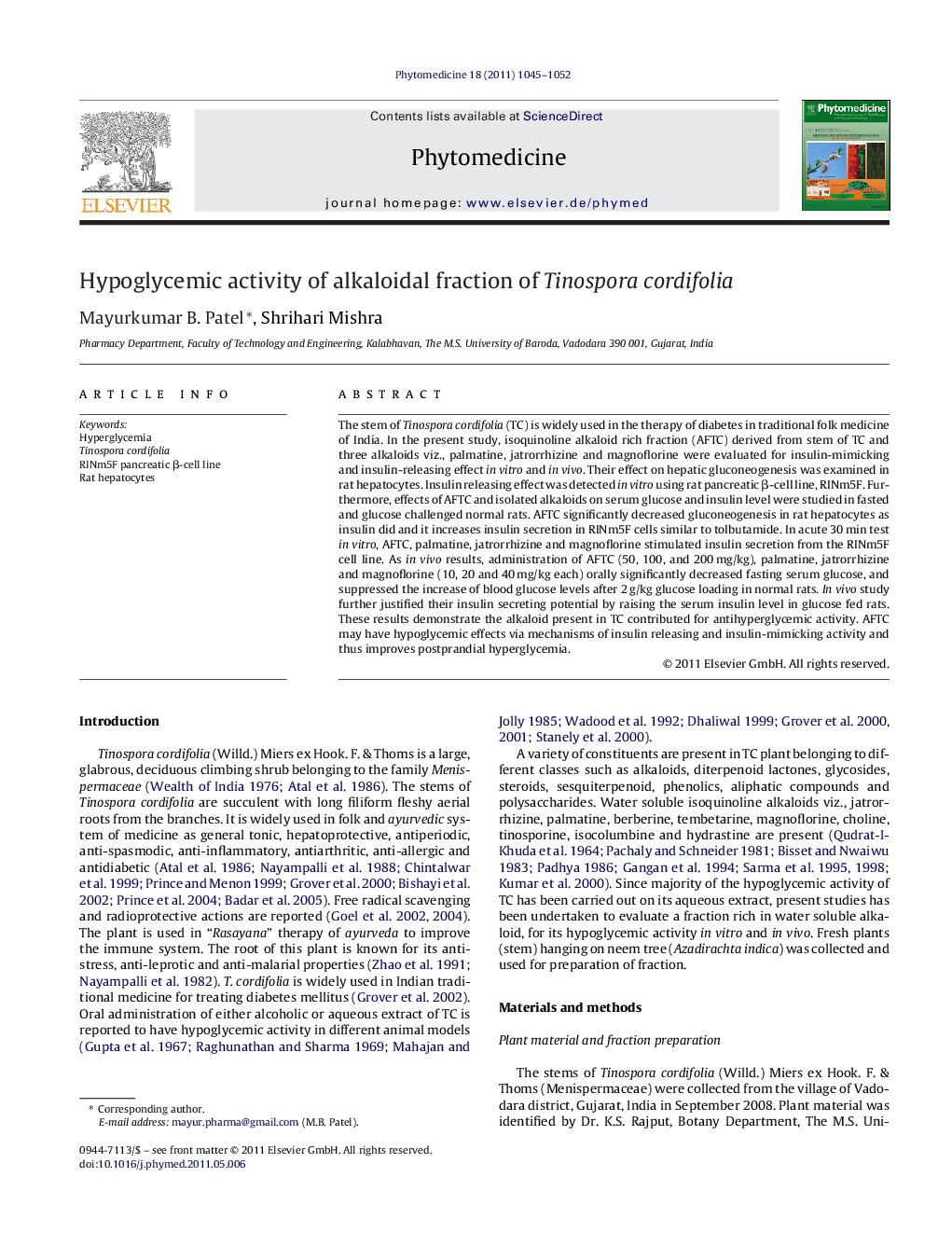| Article ID | Journal | Published Year | Pages | File Type |
|---|---|---|---|---|
| 5816934 | Phytomedicine | 2011 | 8 Pages |
The stem of Tinospora cordifolia (TC) is widely used in the therapy of diabetes in traditional folk medicine of India. In the present study, isoquinoline alkaloid rich fraction (AFTC) derived from stem of TC and three alkaloids viz., palmatine, jatrorrhizine and magnoflorine were evaluated for insulin-mimicking and insulin-releasing effect in vitro and in vivo. Their effect on hepatic gluconeogenesis was examined in rat hepatocytes. Insulin releasing effect was detected in vitro using rat pancreatic β-cell line, RINm5F. Furthermore, effects of AFTC and isolated alkaloids on serum glucose and insulin level were studied in fasted and glucose challenged normal rats. AFTC significantly decreased gluconeogenesis in rat hepatocytes as insulin did and it increases insulin secretion in RINm5F cells similar to tolbutamide. In acute 30 min test in vitro, AFTC, palmatine, jatrorrhizine and magnoflorine stimulated insulin secretion from the RINm5F cell line. As in vivo results, administration of AFTC (50, 100, and 200 mg/kg), palmatine, jatrorrhizine and magnoflorine (10, 20 and 40 mg/kg each) orally significantly decreased fasting serum glucose, and suppressed the increase of blood glucose levels after 2 g/kg glucose loading in normal rats. In vivo study further justified their insulin secreting potential by raising the serum insulin level in glucose fed rats. These results demonstrate the alkaloid present in TC contributed for antihyperglycemic activity. AFTC may have hypoglycemic effects via mechanisms of insulin releasing and insulin-mimicking activity and thus improves postprandial hyperglycemia.
Graphical abstractIsoquinoline alkaloid rich fraction (AFTC) derived from stem of TC and three alkaloids viz., palmatine, jatrorrhizine and magnoflorine were evaluated for insulin-mimicking and insulin-releasing effect in vitro and in vivo. Their effect on hepatic gluconeogenesis was examined in rat hepatocytes. Insulin releasing effect was detected in vitro using rat pancreatic β-cell line, RINm5F. Furthermore, effects of AFTC and isolated alkaloids on serum glucose and insulin level were studied in fasted and glucose challenged normal rats. AFTC significantly decreased gluconeogenesis in rat hepatocytes as insulin did and it increases insulin secretion in RINm5F cells similar to tolbutamide. In acute 30 min test in vitro, AFTC, palmatine, jatrorrhizine and magnoflorine stimulated insulin secretion from the RINm5F cell line. As in vivo results, administration of AFTC (50, 100, and 200 mg/kg), palmatine, jatrorrhizine and magnoflorine (10, 20 and 40 mg/kg each) orally significantly decreased fasting serum glucose, and suppressed the increase of blood glucose levels after 2 g/kg glucose loading in normal rats. In vivo study further justified their insulin secreting potential by raising the serum insulin level in glucose fed rats. These results demonstrate the alkaloid present in TC contributed for antihyperglycemic activity. AFTC may have hypoglycemic effects via mechanisms of insulin releasing and insulin-mimicking activity and thus improves postprandial hyperglycemia.Download high-res image (137KB)Download full-size image
